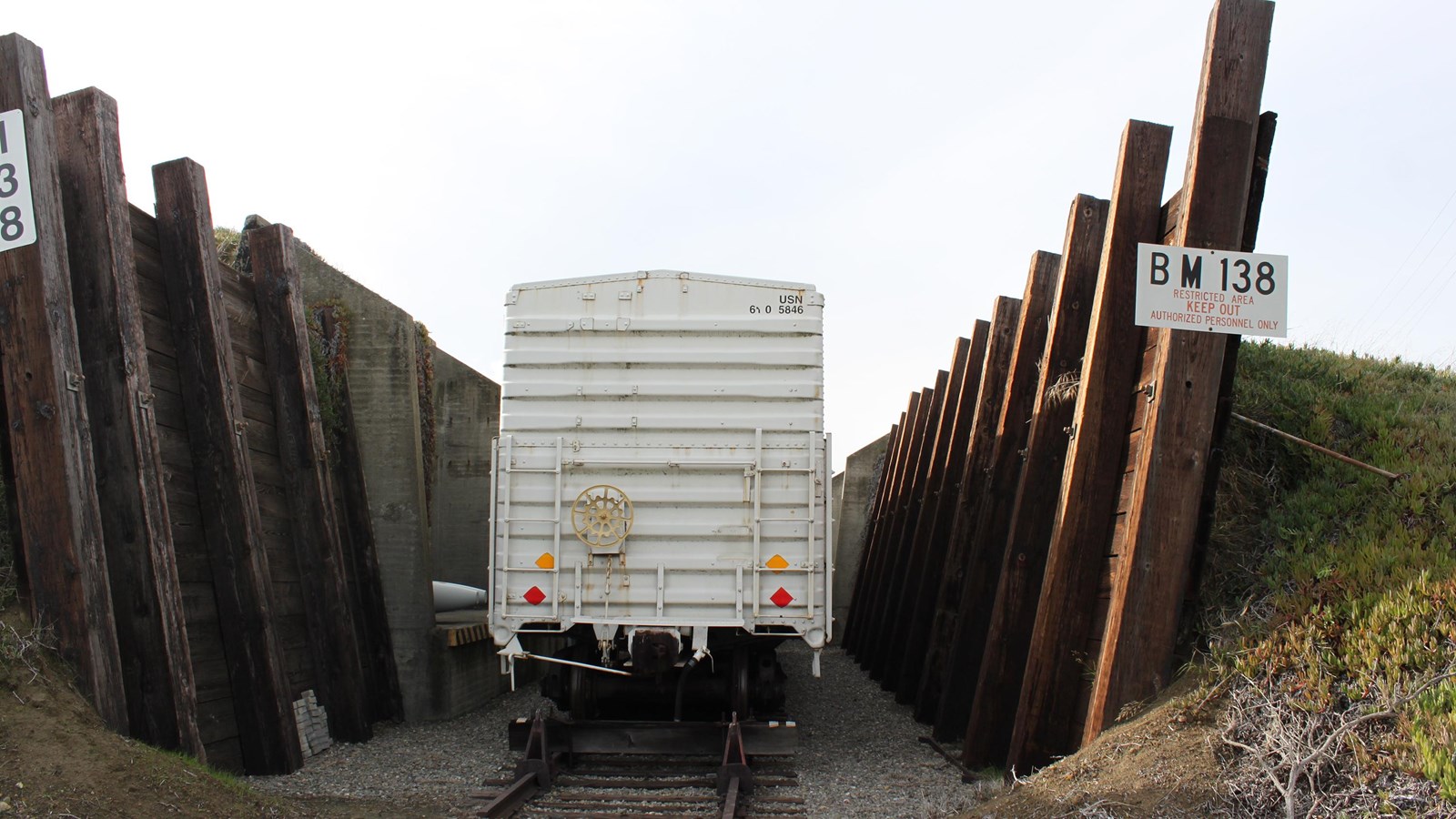Last updated: June 30, 2024
Place
Boxcar at Port Chicago Memorial

NPS photo, Luther Bailey.
Information Kiosk/Bulletin Board
Boxcar and Revetments at Port Chicago
Boxcar Operations
The boxcars at Port Chicago were critical in the logistical operations of transporting munitions. These boxcars arrived by rail from various locations across the nation, carrying a wide array of munitions. Once at Port Chicago, the munitions were unloaded from the boxcars and stored in nearby magazines. For further transportation, these munitions were then reloaded onto smaller railcars, which took them to the pier for loading onto ships bound for the Pacific Theater during World War II.
Revetments
Revetments played a crucial role in the safety and efficiency of the munitions handling operations at Port Chicago. These structures are essentially large barricades made of earth and other materials, designed to protect surrounding areas from the force of accidental explosions.
Function: The primary function of revetments was to contain and direct the blast from any accidental explosions. By doing so, they prevented a chain reaction that could potentially detonate nearby munitions, thereby limiting the extent of damage and casualties.
Design: Revetments typically consisted of thick earthen walls, which were effective at absorbing and deflecting the energy from explosions. This design helped ensure that even if one storage magazine or railcar exploded, the surrounding infrastructure and personnel were shielded from the worst of the blast.
Location: At Port Chicago, the railcars and storage magazines were strategically placed within these revetments. This careful placement was part of broader safety protocols intended to mitigate the inherent dangers of handling large quantities of explosive materials.
The boxcars and revetments at Port Chicago were integral to the safe and efficient movement and storage of munitions. The boxcars facilitated the transportation of these vital supplies, while the revetments provided essential protection against the dangers of accidental explosions, ensuring the overall safety of the operations.
Description of the Boxcar and Revetment at Port Chicago
The photograph shows a white boxcar positioned on railway tracks within a revetment at Port Chicago. This boxcar is representative of the types used during World War II to transport munitions from various locations across the United States to the Port Chicago Naval Magazine.
Boxcar Details
Appearance: The boxcar is painted white and features the designation "USN 610 5846," indicating its use by the United States Navy.
Structure: It is a robust, enclosed freight car designed to carry munitions securely. The rear end of the boxcar, visible in the photograph, has a large, circular wheel mechanism used for securing the doors.
Revetment Features
Construction: The boxcar is situated within a protective revetment. The revetment is constructed from thick wooden beams reinforced with concrete, forming a narrow corridor around the boxcar. These structures are designed to contain and direct the force of any accidental explosions, thereby preventing a chain reaction and protecting the surrounding area.
Signs: A sign marked "BM 138" and labeled "Restricted Area Keep Out Authorized Personnel Only" is visible, indicating that this area is offlimits to unauthorized individuals.
